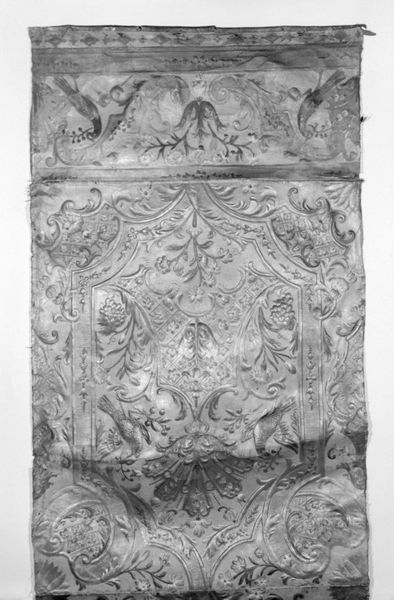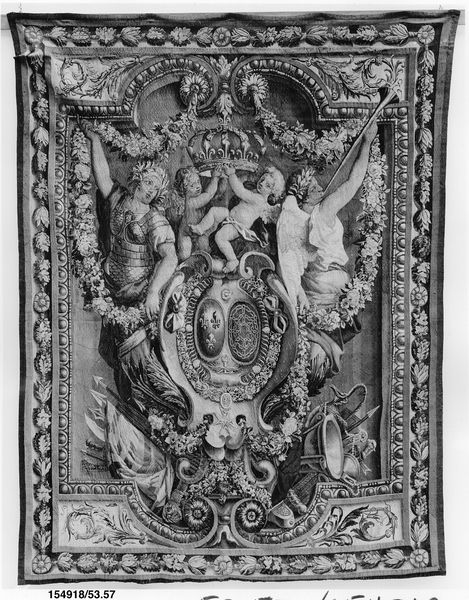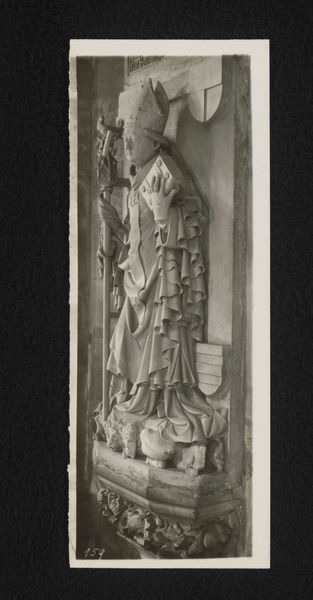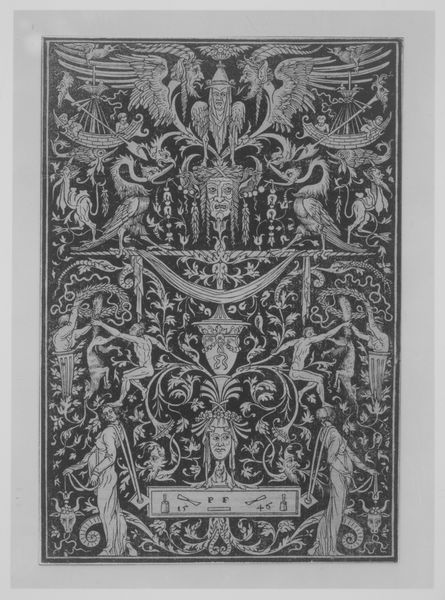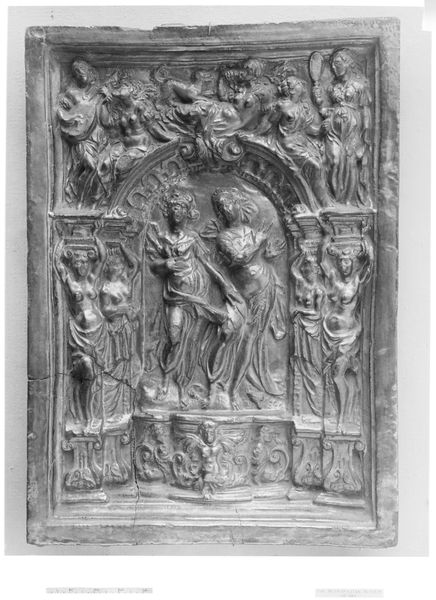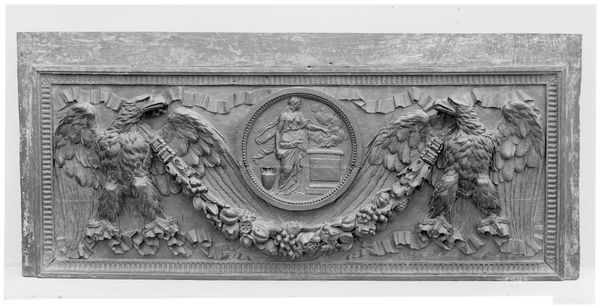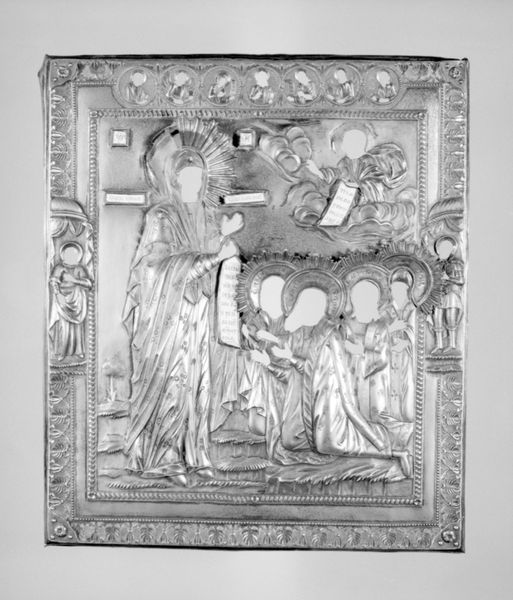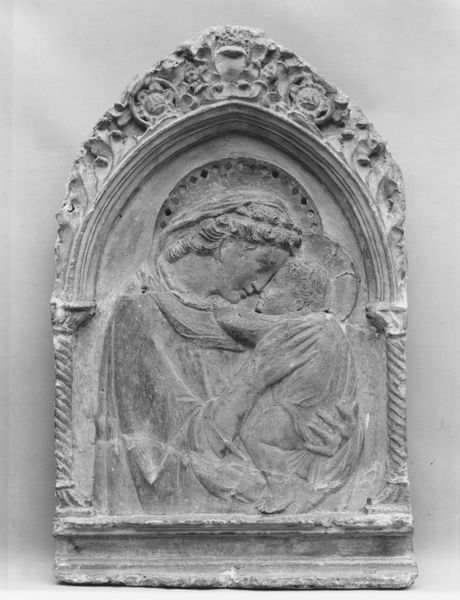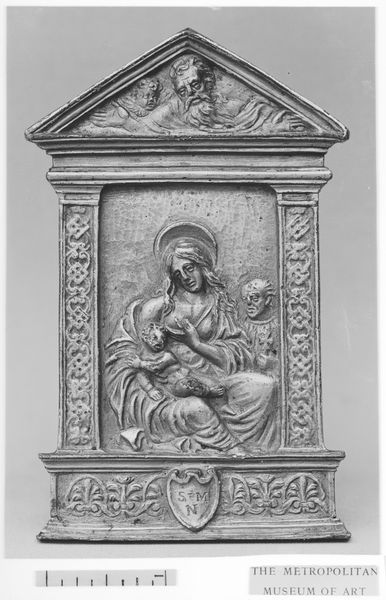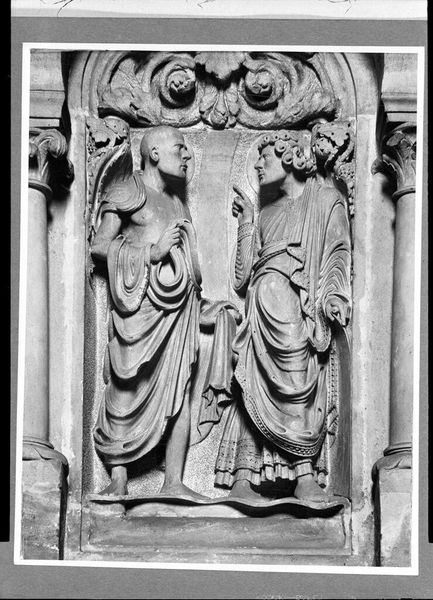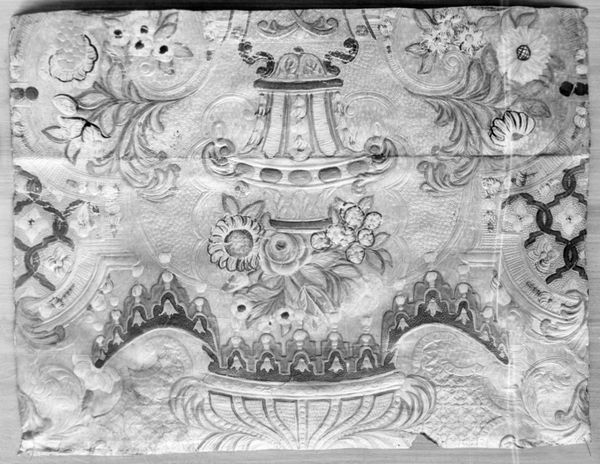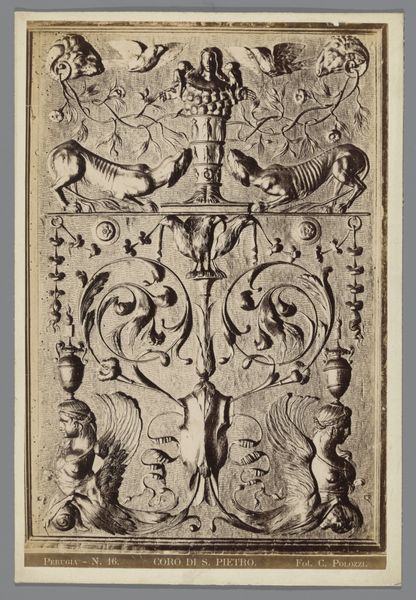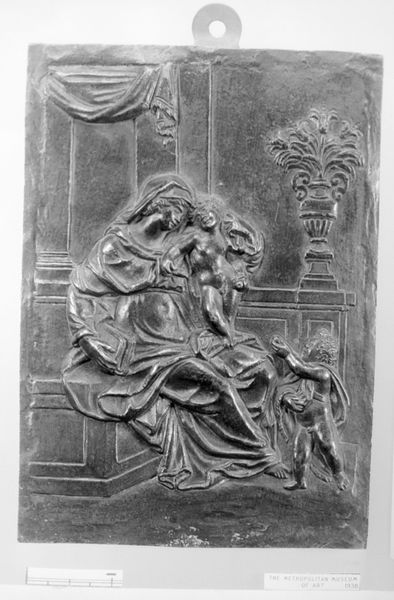
relief, sculpture, marble
#
medieval
#
narrative-art
#
sculpture
#
gothic
#
relief
#
figuration
#
sculpture
#
marble
Dimensions: 140 cm (height) x 65 cm (width) (netto)
Curator: My immediate reaction is a sense of ethereal beauty tempered by a certain formality, given the strict arrangement of scenes and figures within. Editor: Exactly! And what we are looking at is a 14th-century marble relief sculpture titled "En døende sjæl forlader legemet som sommerfugl," which translates from Danish as "A Dying Soul Leaves the Body as a Butterfly." It resides here at the SMK, the National Gallery of Denmark. Curator: The butterfly as the soul—it's an age-old symbol of transformation, isn’t it? Even in pre-Christian times, the butterfly represented the spirit's journey after physical death in many cultures. The gothic style adds such reverence. Editor: Absolutely. Notice the narrative structure, almost like a comic strip? The lower panel depicts the deathbed scene with grieving relatives. An angel guides the emerging soul—represented by a small, childlike figure swaddled in cloth—upwards, where it will hopefully ascend. Curator: Yes, ascending toward that mandorla in the upper register where Mary sits enthroned in majesty. She is surrounded by figures who, presumably, have already made the journey. A strong, idealized afterlife promise for the viewer. Editor: Precisely! These sculptural reliefs like this served a clear didactic function within the medieval church, illustrating religious concepts, specifically beliefs about death and salvation. Consider the emotional impact this would have on a mostly illiterate population, facing the ever-present threat of disease and death. Curator: The artist clearly employs hieratic scale as well. The angel is significantly larger than the other figures. It underscores the angel’s role as an intermediary, guiding the soul. The small child is very significant, because this suggests the pure innocence with which they enter the Kingdom of Heaven. Editor: It highlights a culture preoccupied with the proper performance of death rituals. The artwork provided not just hope, but potentially shaped acceptable bereavement behaviors for the audience. Curator: It is beautiful to consider how certain symbols can continue resonating through generations. The metamorphosis of the butterfly holds just as much spiritual weight for us today as it did during the Gothic era. Editor: It invites us to meditate on those powerful, fundamental beliefs, reminding us about the public function of art through social messaging. Thank you for highlighting its deep history and continuing resonance.
Comments
No comments
Be the first to comment and join the conversation on the ultimate creative platform.
